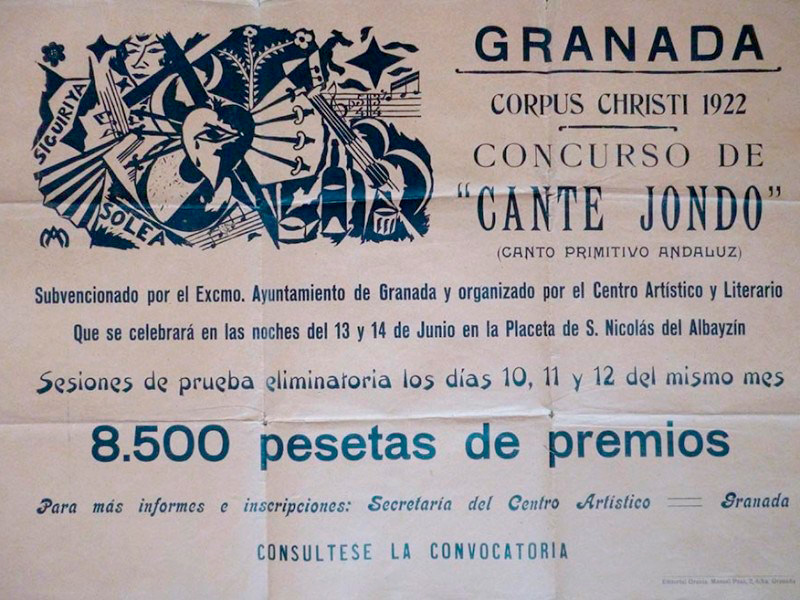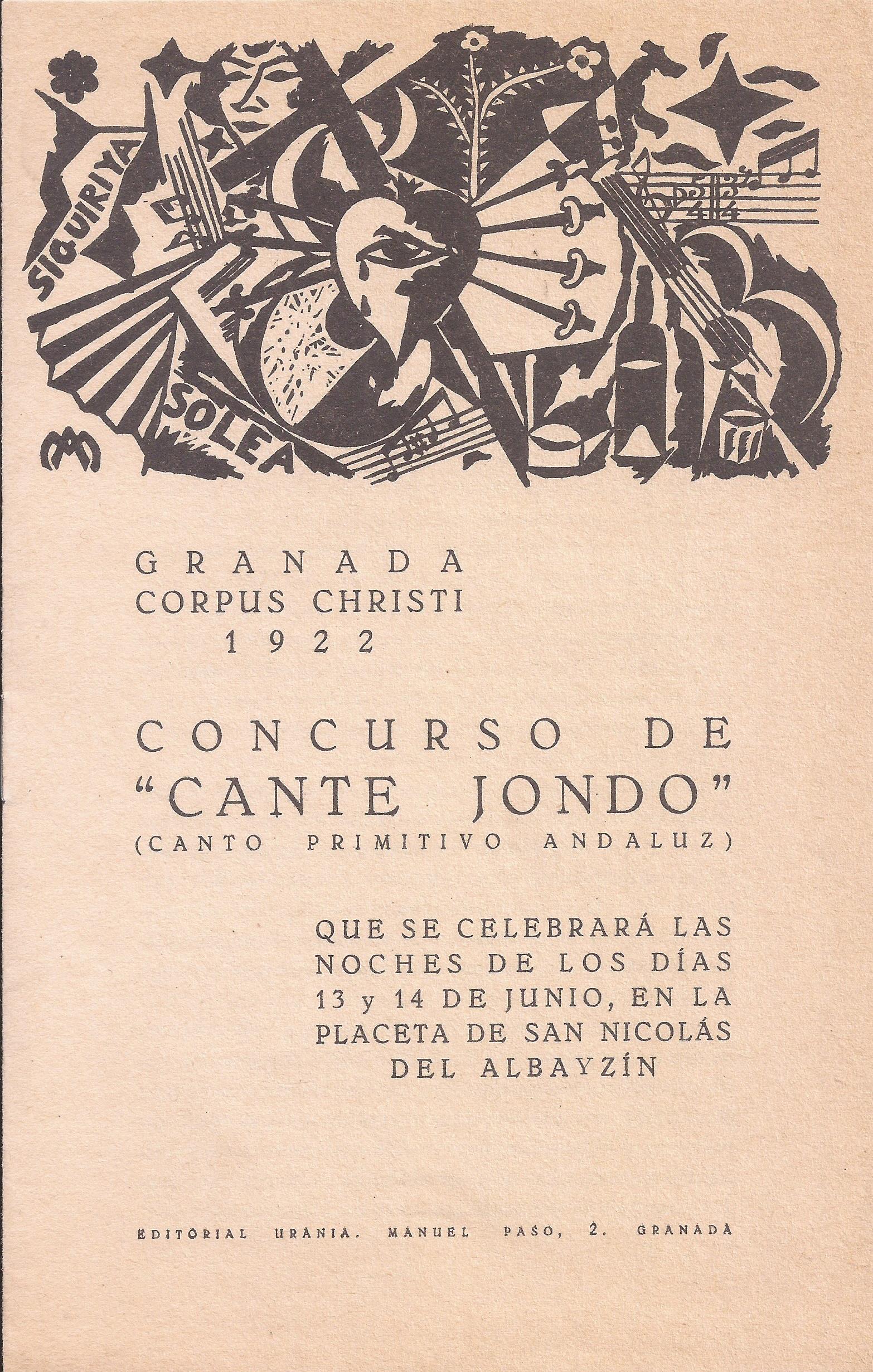Manuel de Falla proposed to Zuloaga that he should make the poster for the Flamenco Song Contest, but the painter, who was in Paris and had family problems, referred it to José María Rodríguez-Acosta. In the end the responsibility fell on Manuel Ángeles Ortiz who, together with Hermenegildo Lanz, was in charge of some preparatory aspects. The poster brought another controversy. Manuel Ángeles devised a motley cubist ensemble -which advanced his predilection for Picasso- that intermingled deep symbols -a heart with an eye in the center pierced by seven daggers, stars and moons, guitars and pentagrams, glasses, bottles, fans and two names of songs, soleá and seguiriya- that left many astonished. The poster also kept a mystery: next to the intertwined M and A of the signature, there is a prominent L that, according to some interpretations, corresponds to Lanz, who somehow contributed to the final design. In fact, there is a note from Lanz addressed to Falla in which he announces that Manuel Ángeles and he were going to “finish the poster” which was printed on orange paper at the Urania Printing House.
The songs had to conform to the strict requirements imposed by Falla: to avoid the abusive flourishes of the songs and any imitation of the “theatrical or concert” style. On the other hand, it was not to be a reason for discouragement if at some point the singer went off-key.
The cubist poster provoked more than a few jokes. Federico García Lorca, in the lecture Architecture of the deep song (1933) recalls that when it was hung there were people who placed other posters with the legend “schools, schools and schools, as if man lived only on bread and alphabet and as if that song was not the most refined expression of an old universal culture”.

The rules of the contest, which were presented on April 6, established 8,500 pesetas in prizes: one of honor of one thousand pesetas, which was declared void; and two others of equal amounts contributed by Zuloaga to the best seguiriya and by Rodríguez-Acosta to the best guitarist. In addition, there were two other prizes of one thousand pesetas, four second prizes of 500 pesetas, several third prizes and a travel allowance of 300 pesetas for the other participants. The songs had to conform to the strict requirements imposed by Falla: avoid abusive flourishing of the songs and any imitation of the “theatrical or concert” style. On the other hand, it was not to be a reason for discouragement if at some point the singer went out of tune.
But the most controversial requirement, so much so that it is still considered by scholars to be the mistake that reduced the scope of the festival, was the exclusion of professionals “over 21 years of age”. By professionals, that meant singers “hired or paid by entertainment companies and individuals”. This requirement meant the elimination of numerous voices that would have enriched the contest. The professionals, however, could send their disciples.
But the most disputed requirement, so much so that it is still considered by scholars to be the mistake that reduced the scope of the festival, was the exclusion of professionals “over 21 years of age”.
This requirement was not understood and there were retorts and protests. Amateurs who sing well, the critics argued, accept contracts, then they are professionals, and the correlation between master and disciple did not depend so much on the accuracy of the teaching as on the vocal characteristics of each singer.

In Seville, moreover, they added another drawback: removing the singing and dancing from its original environment (house, cave, café) and transporting it to a stage diminished its authenticity. “Every spring, Seville, without a saetas contest, can offer tasty samples of the primitive deep song and not do panderetismo (gross music)“, wrote the critic Rodrigo de León angrily. There Mora Guarnido disagreed because he considered that the saeta had also suffered “degenerative influences”. The promoters of Granada found an unexpected ally in a 25-year-old journalist who later achieved national recognition: Manuel Chaves Nogales. The future author of Juan Belmonte, a bullfighter, called “dopes” those who opposed the effort initiated in Granada to save the “deep song” from disappearing.